---------------------------------------------------------
The summer days are starting to grow shorter and fall is peeking around the corner. The garden is starting to look a little tired. But August on the farm always means cucumbers everywhere! I have a whole crisper drawer full of them right now. I was munching on a snack of cucumber wedges with salt the other day and as usual, had soap on the brain. Cucumber Sea Salt Soap was born!

Cucumbers have long been used in skin care for their soothing, astringent properties. For this soap recipe, we are going to use the whole cucumber – flesh, seeds, skin, and all! Cucumbers are mostly water, so for this recipe, we will be substituting all the water in the recipe for pureed whole cucumber.
We will also add plenty of super skin-loving, antioxidant-rich oils like olive & avocado oil. Rich, creamy shea butter and hard-working coconut, palm, & castor oils will round out this awesome spa-quality soap. If you are an experienced soap maker, feel free to substitute any oils that you like for the recipe, just be sure to run the recipe through a soap calculator (like this one).
For the scent, I wanted something relaxing and natural so I am mixing lavender and lemongrass essential oils with a little sweet orange essential oil for a bright, calm scent. If you have fragrance sensitivities (or just want a scent-free soap), you can omit this step. Or substitute your own fragrance. Endless possibilities, that is one of the things I love about soap making!
New to cold process soap making? Click here to check out my beginner’s guide to cold process soap making before diving into this recipe. You will be using sodium hydroxide (lye), so be sure to observe proper safety measures. Don’t make soap when little kids or pets are running around, protect your skin with long gloves & long sleeves, protect your eyes with safety glasses, and protect your lungs with a face mask rated for chemical use.
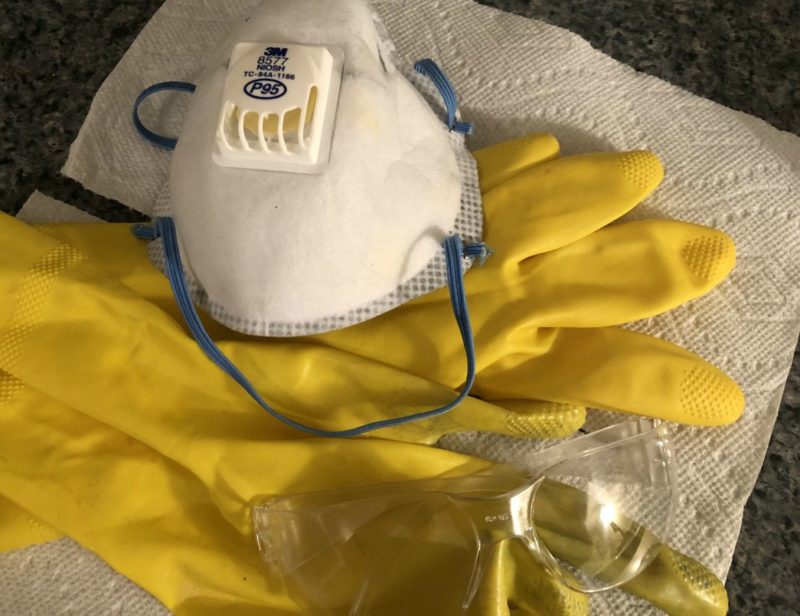
Cucumber Sea Salt Cold Process Soap 3-pound loaf
10.90 oz cucumber puree
4.5 oz sodium hydroxide
8.25 oz Olive Oil
8.25 oz Coconut Oil
6.6 oz Palm Oil
4.95 oz Shea Butter
3.3 oz Avocado Oil
1.65 oz Castor Oil
1 tablespoon sea salt
1 teaspoon sea clay
0.9 oz lavender essential oil
0.9 oz lemongrass essential oil
0.5 oz sweet orange essential oil
Directions
Prepare the cucumber puree
You will likely need just one good-sized cucumber. If after you puree the cucumber you have less than 10.9 ounces, add a little distilled water to make up the difference. Wash & dry the cucumber, chop into slices. Put slices in the food processor or blender and blend until smooth.
You will likely have some chunks of skin in your soap. If you don’t want skin flecks in your soap, strain them out. I like the little flecks, they are rustic and add character!
Measure out 10.9 ounces of puree and pour it into ice cube trays. Freeze for at least a few hours. Whenever I substitute my lye water with a food product (like goat’s milk or tea) I always freeze it beforehand. Once you add the lye, it will heat up to over 200 degrees Fahrenheit. When the liquid has natural sugars from food it can easily scorch, producing a very unpleasant ammonia odor and color.
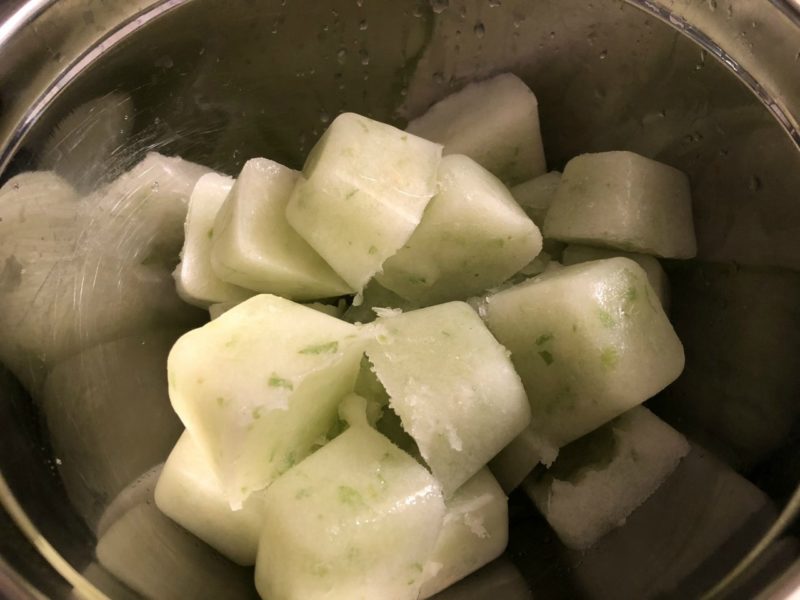
Mix the lye & puree
Once your puree cubes are frozen, it’s time to start soaping! Put your cubes into a stainless steel bowl. **Put on your gloves, safety glasses & mask!**
Carefully measure out 4.5 oz lye. Slowly mix the lye in with your puree cubes. Keep an eye on the temperature. You want to try to keep it under 100 degrees. If it gets too hot, you can cool it down by putting your lye bowl inside a larger bowl full of ice water.
The lye water will turn slightly orange, don’t worry! The hotter it gets, the oranger it will turn. As long as you keep the temps down, the orange color won’t affect your final soap. Set your lye water aside while you work on the other steps. I like to keep the bowl in my sink just in case of accidents.
Measure & melt your oils
Measure out your olive, coconut, palm, avocado, & castor oils and the shea butter. Melt in a double boiler or in the microwave. Once melted, set the oils aside to cool
Prepare additives
Measure your essential oils and blend them together. When making soap with essential oils, I like to “anchor” them with clay. Mixing clay into your essential oil blend helps the delicate scents stick longer in your finished soap.
I usually use white kaolin clay, but for this soap, I am using green sea clay. Not only is sea clay awesome for skin, but it will also give the soap a nice, natural light green color. I want a really light green soap, so I am using 1 teaspoon of sea clay. If you want a darker color, add another teaspoon (or use more dark green cucumber skin in your puree).
Measure out the 1 tablespoon of sea salt.
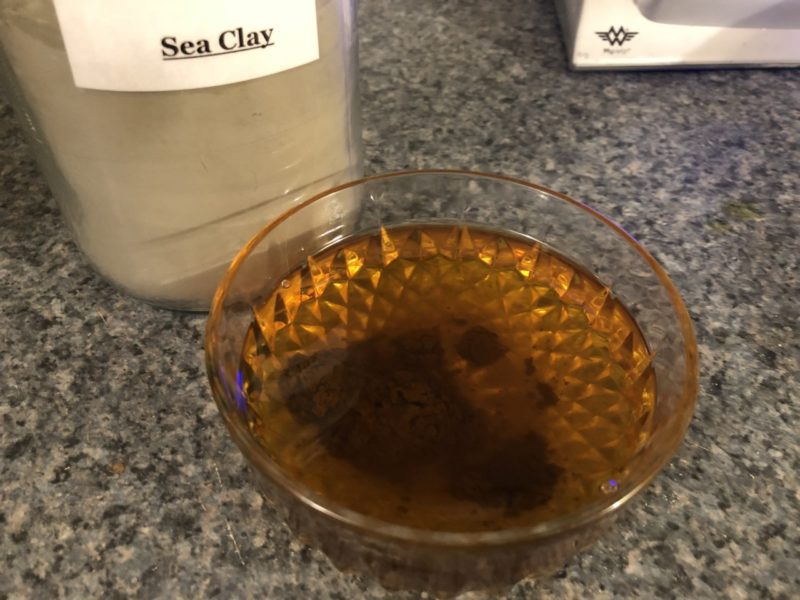
Let everything cool
This is the hardest part of soap making! Wait until your melted oils are under 110 degrees before proceeding to the next step
Blend **Put your gloves & safety glasses on!**
Slowly pour the lye/cucumber puree mixture into the bowl of melted oils. Use your stick blender to bring the soap batter to a medium trace. A medium trace is a pudding-like consistency. You need the batter to be thick enough to suspend the sea salt without it sinking to the bottom.
Add essential oils & sea salt
Use a spatula to hand stir in your essential oil/clay mix and your sea salt
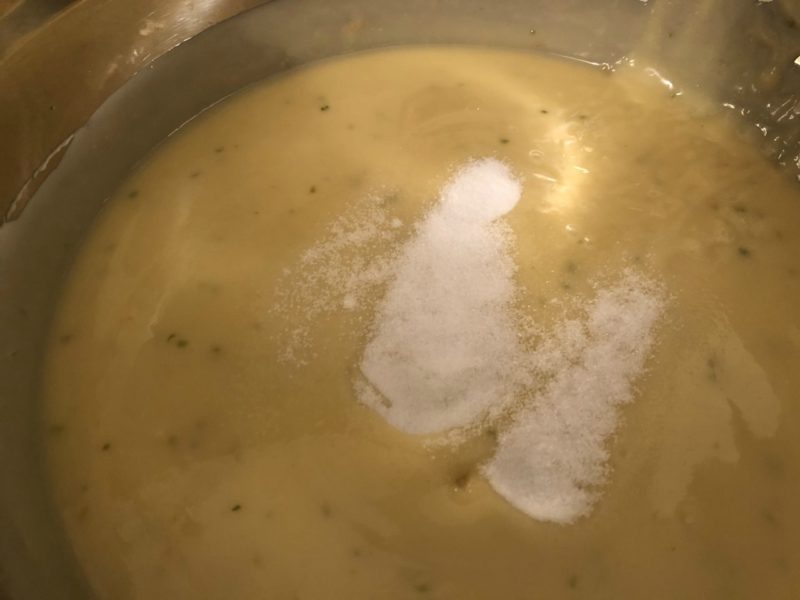
Pour into mold
This recipe is enough to fill a 3 pound loaf mold. Once you have poured the batter in, tap the mold on the counter a few times to release any air bubbles
Decorate top – optional
I decided to use an old fork (that is just used for soap making) to make a little wavy design on the top. To make a design like this, you just need to wait until the batter is at the right consistency.
If you make the design and it just won’t stay, your batter is still too liquidy. Smooth the top, go do your soap dishes and come back to it in 5 minutes or so. Drag the fork tines really lightly across the surface. I also added a little bit of pink Himalayan sea salt to the top just because.
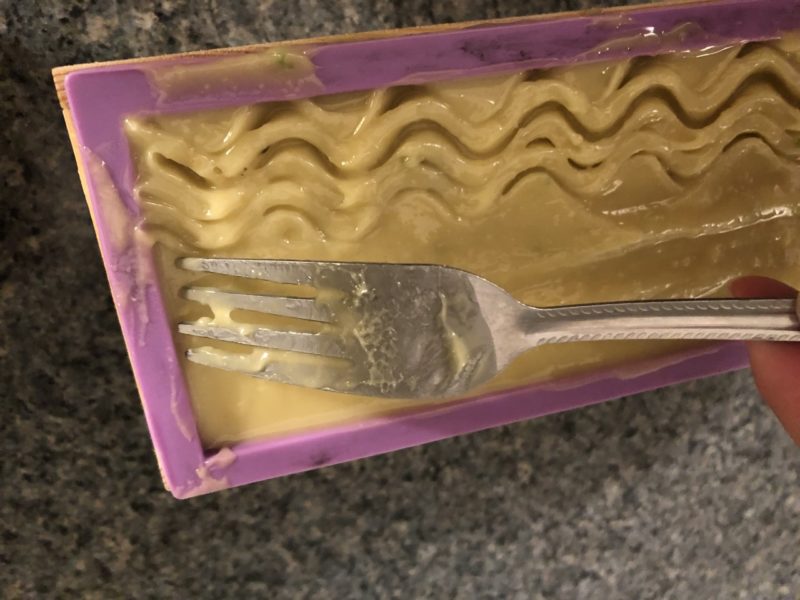
Put it in the refrigerator
As the process of saponification takes place to turn your batter to soap, it’s going to get hot. We don’t want it to heat up and scorch the puree so put your soap loaf in the refrigerator uncovered overnight
Unmold, cut, & cure
After 24 hours, unmold your soap, cut it into bars, and let it cure for 5-6 weeks. Sometimes soap that hasn’t gone through the gel phase (when it gets super hot) takes a little longer to unmold.
If after 24 hours your soap is still really soft and not releasing easily from the mold, let it sit for another 12 hours or so. If you used chunky salt on the top, be sure to turn your loaf on its side when cutting it so the salt chunks don’t make drag marks when you are cutting.
Don’t want to make your own? Click here to check out my soap shop, I often have this one in stock!
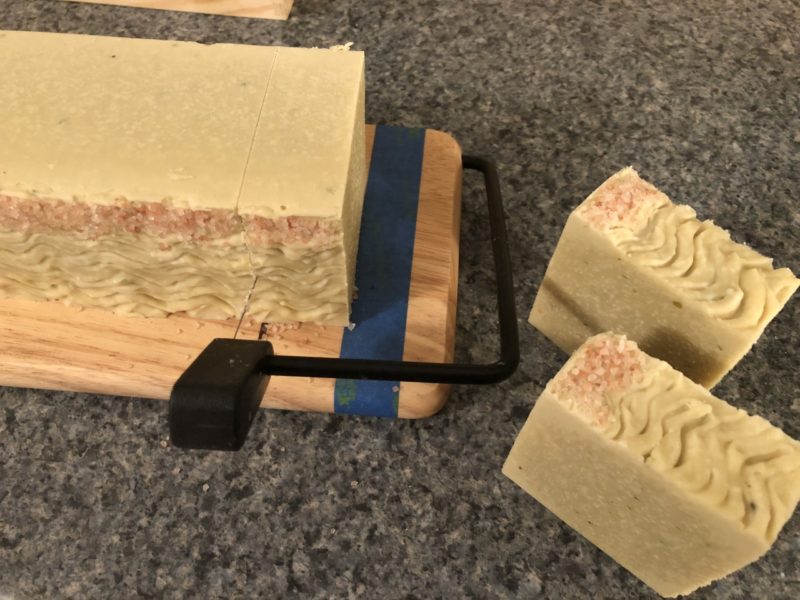
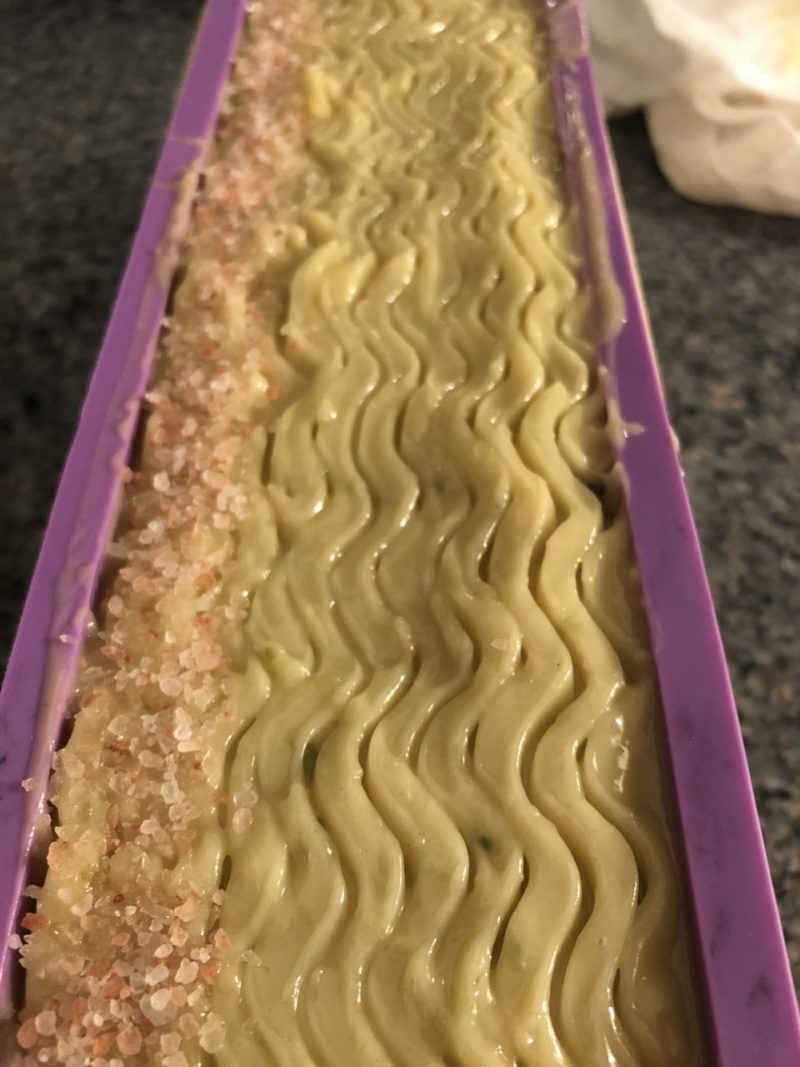
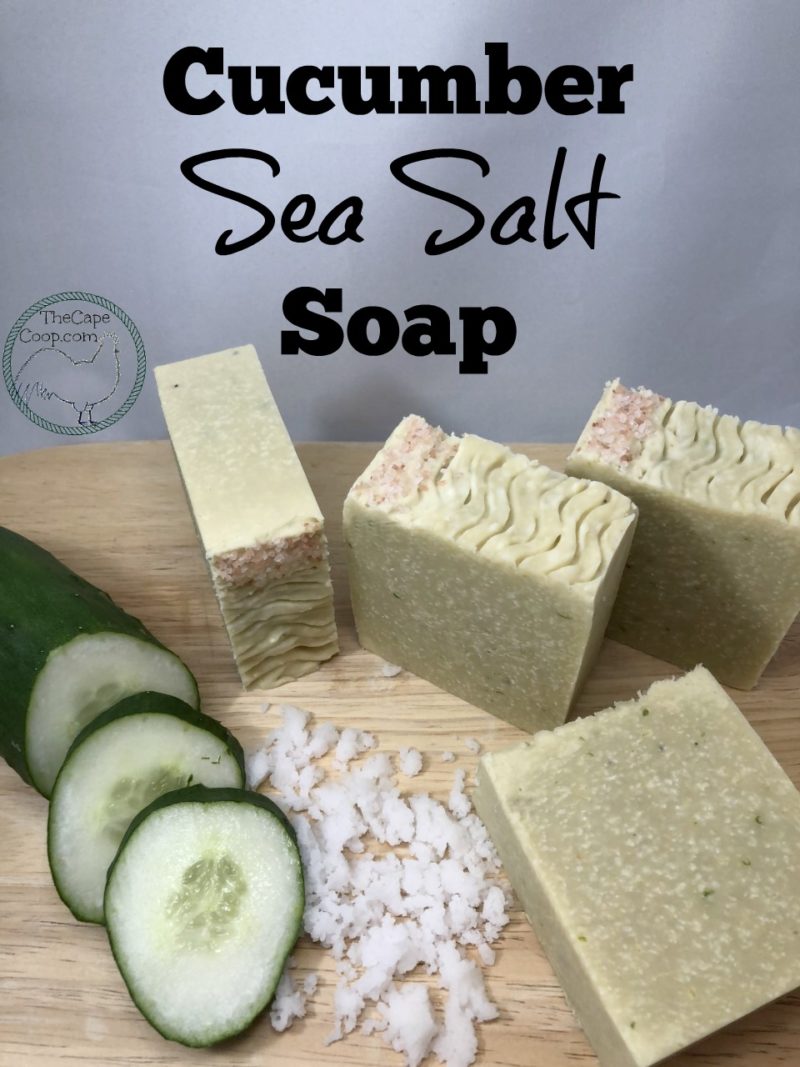
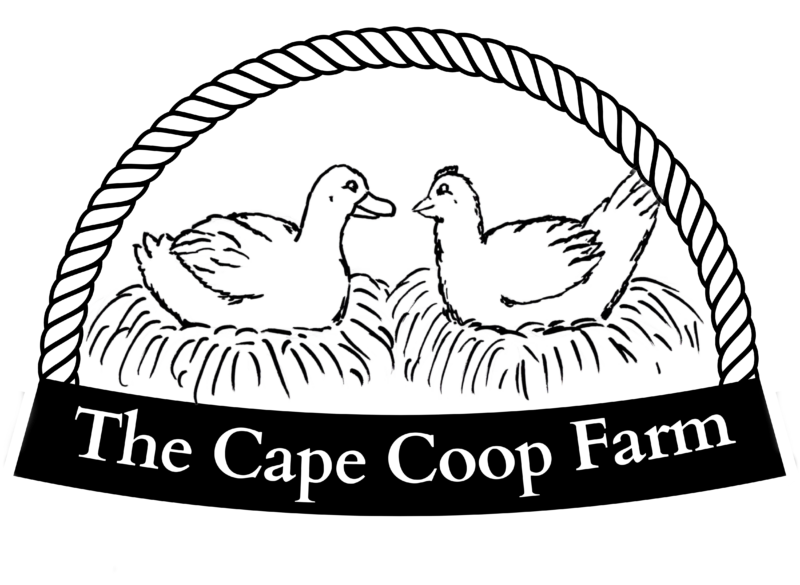
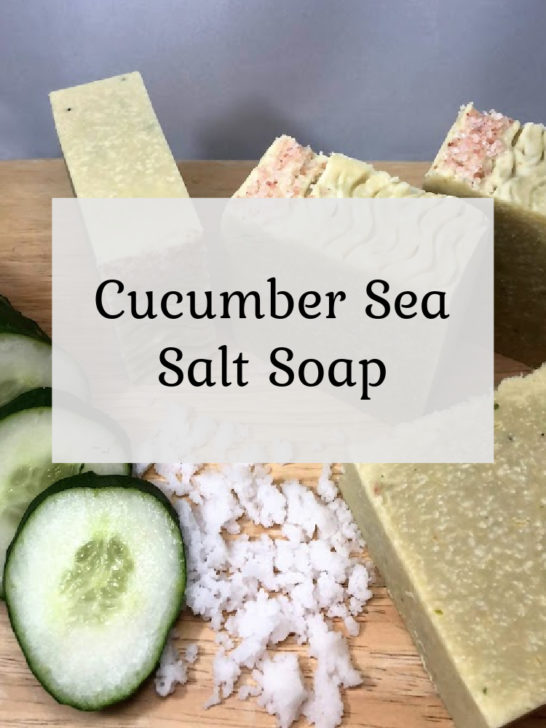

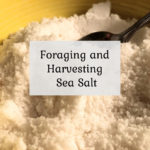
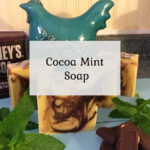
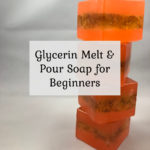
Nina
Sunday 25th of August 2024
Hi I'm new to cp and have a ? What are some substitutes could I use in place of palm I love the smell of cucumber and would love to make this soap but can't use palm
Liz
Tuesday 27th of August 2024
Hi Nina, other fats with similar properties as palm would be cocoa butter, babbassu oil, or mango butter. They are all great at adding hardness & longevity to your soap. But when making soap it is really important to run any changes through a lye calculator. Every fat needs a different amount of lye to turn into soap. If you swap out a fat for something else you will need to recalculate the lye amount. I like to use the calculator at soapcalc.net
Jayne Pelosi
Sunday 7th of October 2018
Hello Liz met you at the seaside festival yesterday and loving your products... do have a question though about possibly exchanging the scrub I bought... it's a little too sweet for me... can we do this? I can maybe come to Falmouth.
Liz
Monday 8th of October 2018
Hi Jayne! That is definitely possible. Check out the other scrub scents and let me know which one you'd like. You can shoot me an email at info@thecapecoop.com and we can make arrangements for the swap :)